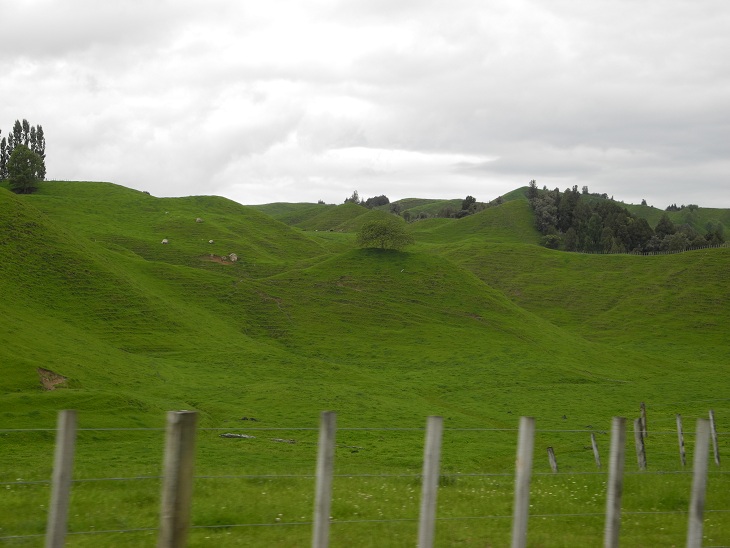Middle Earth and Beyond
While in Rotorua, we made a booking for a special tour on
our way northward—a guided exploration of Hobbiton! (Did I mention being
Tolkien fans?) So, we drove up to Matamata and spent an amazing couple of hours
at the farm where they have completely rebuilt the movie set of the Shire that
was used for both the Lord of the Rings and the Hobbit movies. We were so
impressed with the phenomenal attention to detail throughout the valley! I
loved that there was a little hobbit-sized earthenware mug balanced on a log by
the wood shed, as if the busy hobbit had just forgotten it there that morning!
They have a team of gardeners constantly working on keeping everything as
beautiful as possible. They've also expanded the Green Dragon into a completely
functional restaurant and pub where they are already taking bookings for
upcoming events. (Can you imagine having a significant birthday celebration in full
hobbit style?)
 |
| Bag End |
 |
| The Green Dragon |
Following our lunch at the Shire’s Rest Café,
we returned to the road heading northeast to the Coromandel Peninsula. What a
drive that was! If you want magnificent scenery with mountains, valleys,
rain-forests, and ocean vistas, you have to take the roads that come with them!
We are talking mountain switchbacks here, people! I’m sure that those who
travel the Himalayas and Andes will scoff at me, but this was plenty of driving
adventure for me! My son alternated between hiding behind his book (thankfully
not being prone to motion sickness) and muttering about being really glad he
was too young to drive! We both appreciated the stunning scenery, mind you! We
just appreciated it better from the scenic lookouts where we could stop and
view for a while.
Our second day in the Coromandel we alternated our driving with some walks to get close up and see the details of some amazing sights. The first was Cathedral Cove. The hike took a little over ¾ of an hour each way, depending on where you detoured and how long you stopped to catch your breath. Our one detour was to the stunning little Gemstone Bay, in which even on our overcast day, the rocks and waters shone with myriad colours (not completely apparent in the photo, but you do what you can):
Once we got to Cathedral Cove itself, we enjoyed not only
the cove, but also the hollow passage under the rock on the north side, through
which you can see the same vista that greeted the Pevensie children on their
return to Narnia in the movie Prince Caspian!
The other walk we took was much shorter—a whole five minutes
from the side of the road! We did expect it to be longer, but there was the end
of the path, and the beautiful Waiau Falls right in front of us, when we had
hardly started walking!































.jpg)
.jpg)
.jpg)











